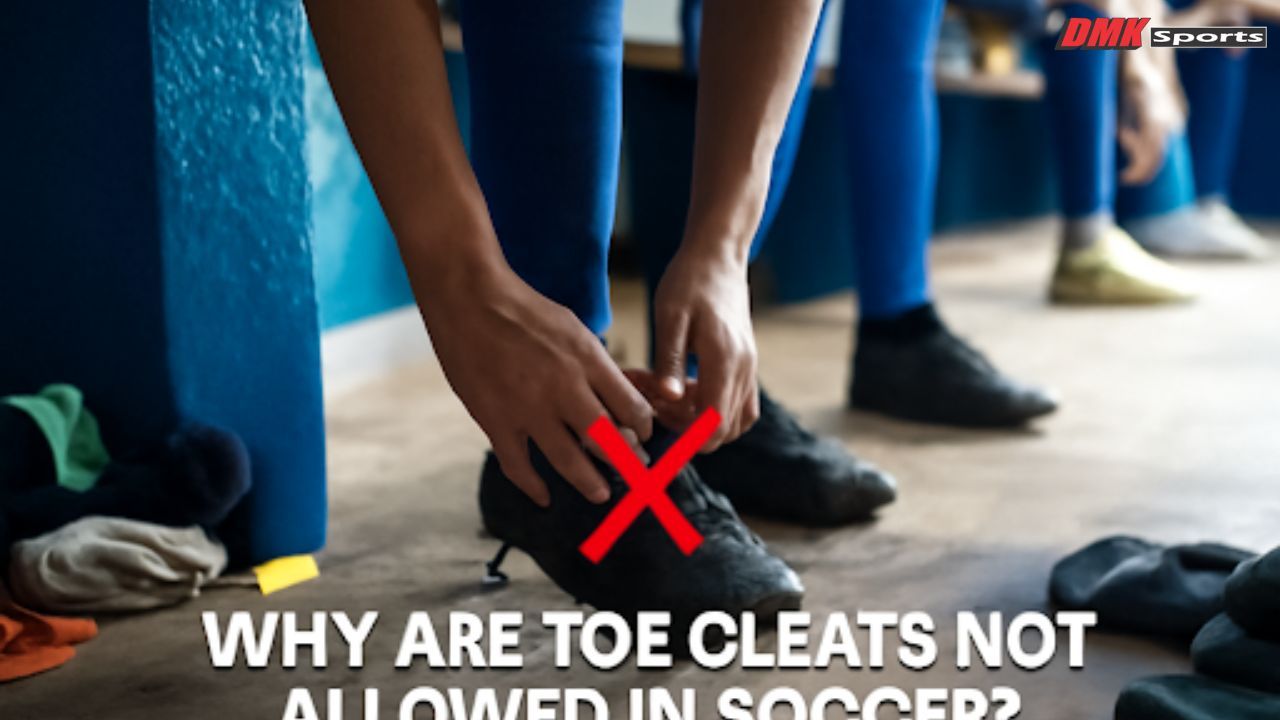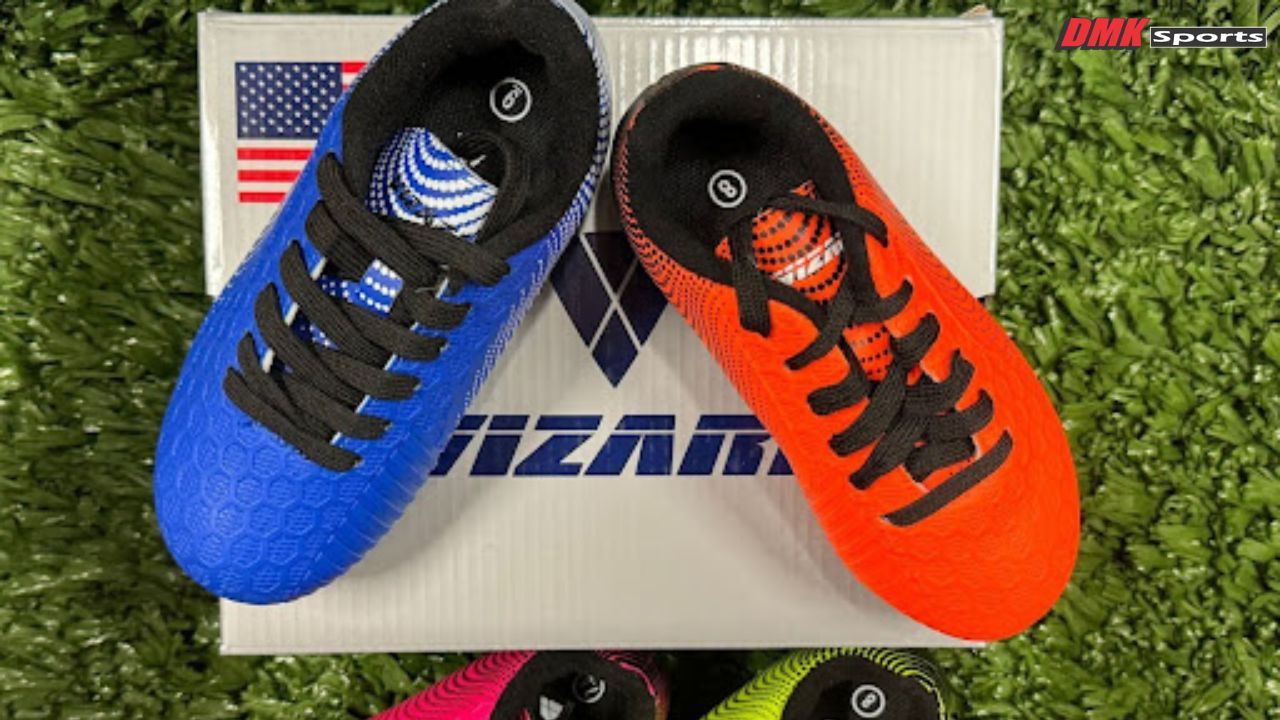Why Are Toe Cleats Not Allowed in Soccer?

Every player wants to have an edge on the field, at first you may think that toe cleats can be a game changer in your performance but their hidden dangers make them a serious threat to player safety and fair play.
Here’s what you need to know about Why Are Toe Cleats Not Allowed in Soccer. Soccer is a phenomenal sport that has emphasized player safety, fairness, and proper performance standards. That is why among its equipment regulations, toe cleats are strictly prohibited.
The reason being that with the bulge at the front of the shoe, might appear to help players have better traction, but their design introduces serious safety risks and gameplay consequences.
What Are Toe Cleats?
At the tip of the shoe, toe cleats have studs that are concentrated. Standard soccer cleats are made up of studs that are distributed across the forefoot and heel, but toe cleats are made up of studs that are concentrated in one area.
This design may appear to improve acceleration, but it can increase injury risks and create instability during play.
Safety Concerns
With the forward-facing studs of toe cleats can cut or scrape opponents very easily, in a scenario where a tackle is being made or contested balls players it can harm easily.
Toe Cleats are not allowed for a reason, as it has been known to create uneven pressure on the wearer’s foot, which increases the chance of stress fractures, toenail damage, and general discomfort, which no player would like, if they want to play for a long run.
Soccer footwear must protect both the player and others, making toe cleats incompatible with these standards.
Impact on Gameplay
Although Toe cleats are known to have a design that can help with unnatural acceleration and pivoting, giving players an unfair advantage, they are still not safe in the long run. It could make the tackling and ball control more hazardous.
With frequent stoppages and forcing referees to intervene can be disrupting the flow of the game. Standardized cleats ensure consistent performance and reduce the risk of unnecessary interruptions.
Comparison: Soccer vs. Football Cleats
According to DMK Sports, there are key distinctions between soccer and football cleats that highlight why toe studs are prohibited in soccer:
- Stud Placement and Design: Football cleats often include a
toe stud for explosive forward traction, suitable for linear movements in football. Soccer cleats, however, use
evenly spaced studs to support
multidirectional movement, enhancing
ball control and reducing
injury risk.
- Footwear Structure and Weight: Football cleats are
heavier and provide more
ankle support for physical play. Soccer cleats are
lighter and more flexible, allowing for
quick footwork and agility, which are essential for the fast-paced nature of soccer.
These differences reinforce that toe studs are unsafe and unnecessary in soccer, where flexibility, safety, and multidirectional movement are paramount.
Difference between:
- Toe stud: A single stud or small stud cluster at the toe; sometimes seen in football cleats for linear traction.
Toe cleats: Shoes where the front area is stud-heavy; banned in soccer due to
safety and gameplay issues.
Regulatory Standards
FIFA’s Laws of the Game require players to wear safe and suitable shoes. Toe cleats fail this requirement due to their injury potential. National associations, including the US Soccer Federation, ban cleats with studs positioned solely at the toe, ensuring uniform safety and fairness across all levels of play.
Biomechanical and Legal Considerations
Soccer involves sprints, pivots, and lateral movements. Toe cleats disrupt natural foot mechanics, increasing the risk of ankle and toe injuries. Legally, clubs and organizers could face liability issues if injuries occur due to non-compliant footwear. The ban protects both players and institutions.
Modern Cleat Innovations
Modern soccer cleats achieve enhanced grip, speed, and control without toe studs. Stores like DMK Sports offer a wide range of lightweight, ergonomic, and cushioned cleats designed for safety and performance. Innovations include:
- Ergonomic designs that support natural foot movement
- Lightweight materials for faster acceleration
- Cushioned soles that reduce joint strain
These advancements provide performance benefits while maintaining safety compliance, ensuring players can perform at their best. For players interested in purchasing safe and high-quality cleats, DMK Sports’ adult soccer cleats collection is a reliable option.
Conclusion
Toe Cleats are not allowed in soccer mainly to protect the players from harm, maintaining the integrity of the game from the unfair advantage it provides with long term consequences.
Their concentrated studs increase the chance of injury and disrupt gameplay frequently, while the standard soccer cleats deliver safe, effective performance. By enforcing this rule, soccer authorities ensure the sport remains competitive, safe, and enjoyable for all players.
For additional guidance on selecting compliant cleats, check DMK Sports’ guide to adult soccer cleats.










